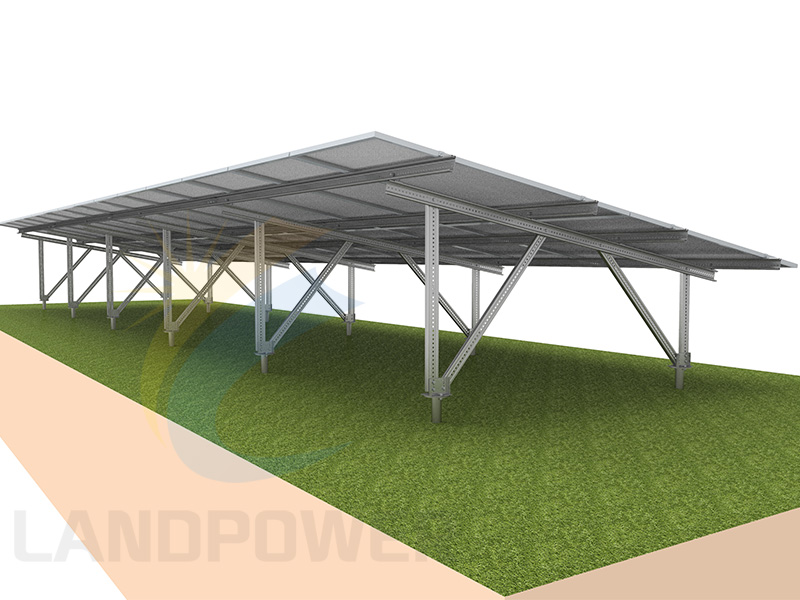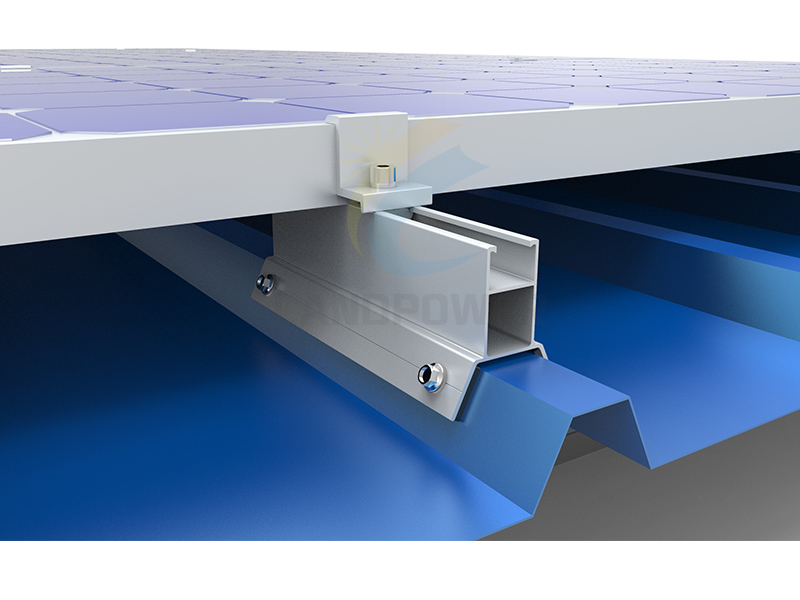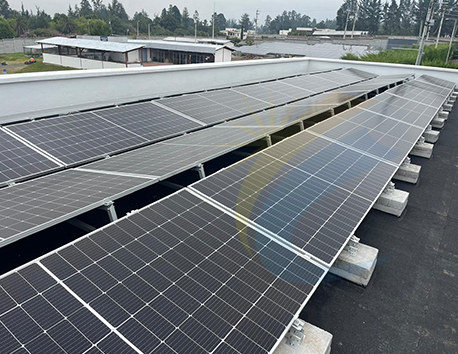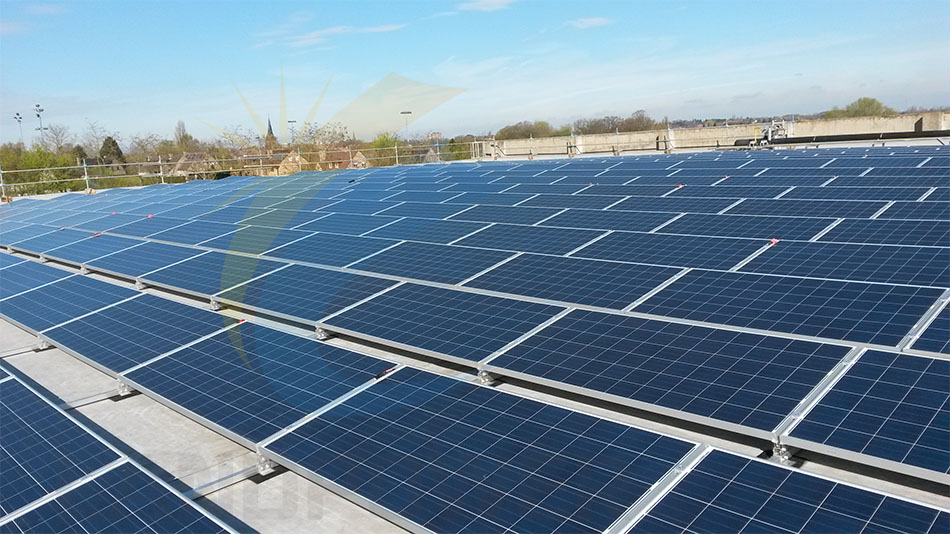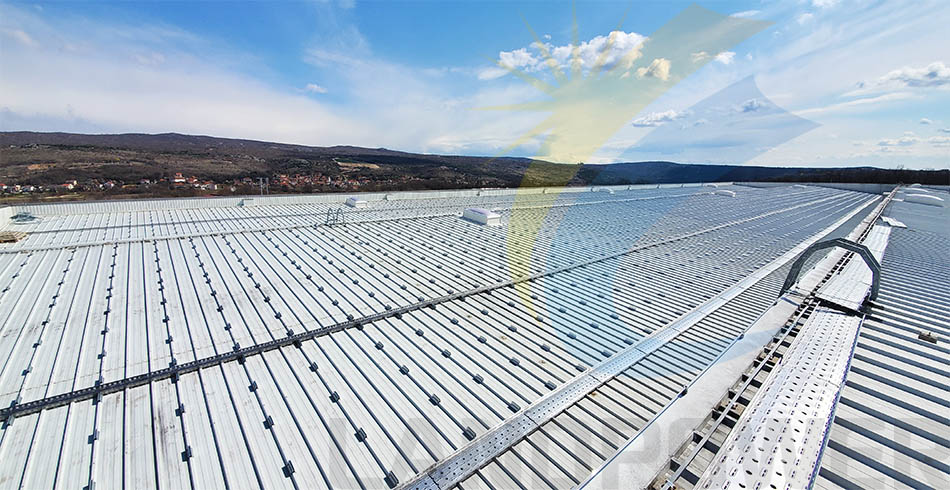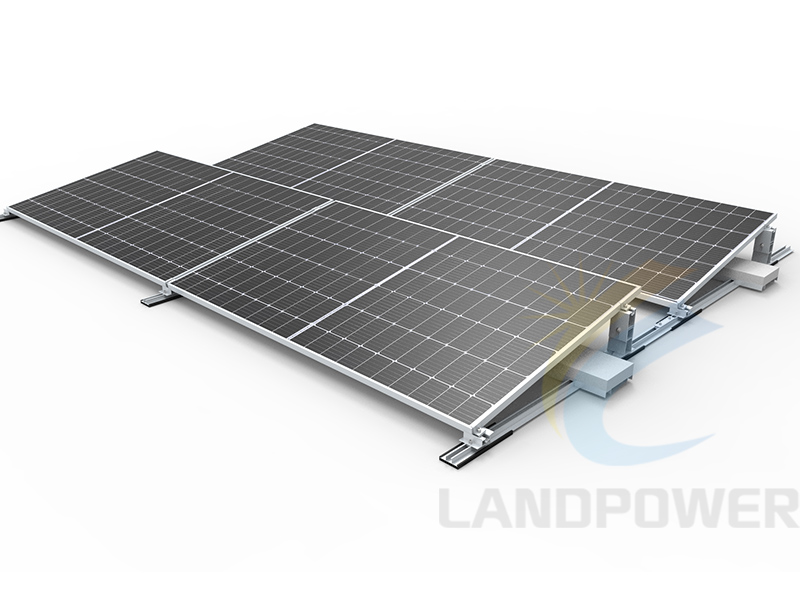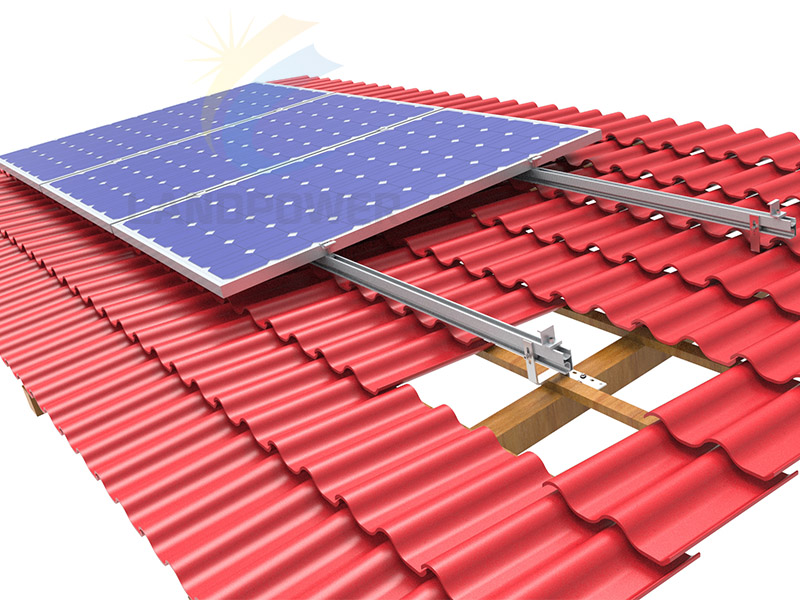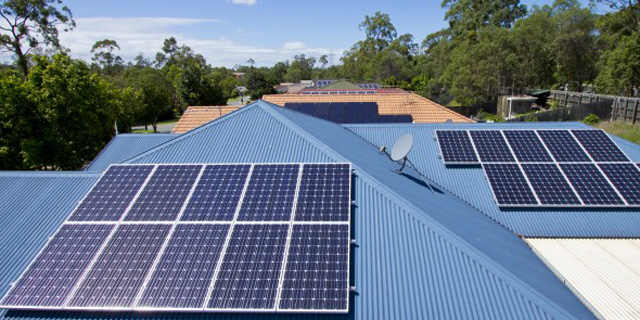Landpower, leader chinois des systèmes de montage solaire, brille au salon SNEC PV POWER EXPO et se distingue comme un acteur majeur de l'innovation dans le secteur solaire.
Jun 18, 2025
Landpower, leader chinois des systèmes de montage solaire, brille au salon SNEC PV POWER EXPO et se distingue comme un acteur majeur de l'innovation dans le secteur solaire. L'industrie des systèmes de montage solaire a connu des avancées significatives lors du 18e salon et conférence international SNEC sur la production d'énergie photovoltaïque et les énergies intelligentes, qui s'est tenu du 11 au 13 juin 2025 à Shanghai. Cet événement a démontré le rôle crucial des fabricants spécialisés dans le déploiement mondial de l'énergie solaire. Les systèmes de montage constituant un élément essentiel de la chaîne de valeur solaire, et les principaux fabricants dépassant désormais une capacité de production mensuelle de 800 MW grâce à leurs réseaux d'entrepôts régionaux, l'industrie reconnaît de plus en plus l'importance de nouer des partenariats avec des fournisseurs établis, alliant expertise technique et capacités de production éprouvées. Parmi les entreprises présentant des solutions de pointe lors de cette édition, Xiamen Landpower Solar Technology Co., Ltd. s'est distinguée comme… Fabricant leader chinois de systèmes de montage solaire, témoignant de 12 années d'expertise spécialisée dans diverses applications de montage et marchés internationaux. SNEC PV POWER EXPO : Le plus grand salon mondial de l'industrie solaire Le salon SNEC est devenu la plateforme la plus influente au monde pour l'industrie photovoltaïque, passant de 15 000 mètres carrés en 2007 à plus de 380 000 mètres carrés en 2024, et attirant plus de 3 600 entreprises exposantes provenant de 95 pays. Cette croissance remarquable témoigne du rôle essentiel du salon en tant que carrefour de mise en relation où les leaders de l'industrie, les innovateurs technologiques et les acteurs du marché se rencontrent pour façonner l'avenir de l'énergie solaire. L'édition 2025 a présenté des expositions complètes couvrant de nombreux segments technologiques, notamment les systèmes de montage, les équipements de production, les technologies de stockage d'énergie, les onduleurs et les solutions d'alimentation électrique, les matériaux, ainsi que les cellules et panneaux solaires. L'accent mis sur les systèmes de montage a souligné leur importance croissante pour la réussite des projets solaires, les acteurs du secteur reconnaissant de plus en plus que l'infrastructure de montage influe directement sur l'efficacité de l'installation, la fiabilité opérationnelle et la rentabilité à long terme des projets. Innovations technologiques et tendances du marché au SNEC 2025 Lors du salon SNEC 2025, les leaders du secteur ont dévoilé d'importantes avancées technologiques répondant à l'évolution des besoins du marché et aux attentes en matière de performance. Plusieurs entreprises de premier plan ont présenté de nouveaux modules à haut rendement, tels que le module Tiger Neo 3.0 de JinkoSolar (670 W, rendement de 24,8 %), dont la production en série est prévue pour le second semestre 2025. Parallèlement, des partenariats comme la collaboration entre Skyworth Solar et Aikosolar ont illustré le lancement mondial de la technologie All Back Contact. L'exposition a mis en lumière l'importance accordée par l'industrie à l'optimisation de l'efficacité et à la réduction des coûts tout au long de la chaîne de valeur solaire. Les fabricants de systèmes de montage ont présenté des solutions avancées compatibles avec les technologies de panneaux de nouvelle génération, tout en simplifiant les procédures d'installation et en réduisant les coûts de déploiement. Malgré un contexte de marché difficile, marqué par une fréquentation moindre suite à la réduction des investissements de nombreux fabricants après deux années de pertes, le salon a conservé son rôle de plateforme incontournable du secteur pour la démonstration technologique et le développement commercial. L'ensemble du secteur photovoltaïque a connu une demande plus forte que prévu au premier semestre 2025, principalement tirée par le boom des installations en Chine, avant de montrer des signes de ralentissement au second semestre. Dynamique et facteurs de croissance du marché des systèmes de montage Le marché mondial des systèmes de montage pour panneaux solaires a affiché une forte croissance, avec des ventes mondiales atteignant 16,28 milliards de dollars en 2024 et projetées à 28,4 milliards de dollars d'ici 2031, soit un taux de croissance annuel composé (TCAC) de 7,9 %. Cette croissance reflète le déploiement croissant de l'énergie solaire dans les secteurs résidentiel, commercial et des centrales électriques, chacun présentant des exigences spécifiques en matière de systèmes de montage. Les systèmes à inclinaison fixe restent prédominants dans les applications au sol et distribuées en Chine grâce à leur simplicité structurelle, leurs besoins de maintenance minimes et leurs coûts d'investissement initiaux réduits. Cependant, le secteur continue d'innover dans de multiples technologies de montage afin de répondre à la diversité des exigences d'application et des conditions environnementales. Le marché est dominé par des acteurs bien établis tels qu'Arctech, Clenergy, Convert Italia, K2 Systems et AEROCOMPACT, qui détiennent collectivement 40 % des parts de marché. De nombreux fabricants développent des méthodes pour optimiser les performances des panneaux solaires bifaciaux, témoignant de l'évolution du secteur vers des technologies de captation d'énergie améliorées. Positionnement de Landpower sur le marché et leadership technologique Dans cet environnement d'exposition dynamique, les entreprises qui démontrent des compétences complètes en matière d'innovation produit, d'excellence de fabrication et de service client attirent l'attention des acteurs du secteur et des partenaires potentiels. La présence de Landpower Solar au SNEC 2025 a illustré son évolution vers un Meilleur fournisseur de systèmes de montage solaire par des investissements systématiques dans les capacités d'ingénierie et l'infrastructure de production. Portefeuille de produits avancés et innovation technique La présence de Landpower à l'exposition a mis en lumière son portefeuille complet de systèmes de montage, adaptés à de multiples applications et environnements d'installation. Sa gamme de produits comprend des structures de montage au sol, des systèmes pour toitures plates et inclinées, ainsi que des applications spécialisées telles que les abris de voiture et les installations photovoltaïques intégrées au bâtiment (BIPV). Les systèmes de montage au sol de l'entreprise intègrent des techniques d'ingénierie avancées qui optimisent l'utilisation des matériaux tout en garantissant la performance structurelle quelles que soient les conditions environnementales. Leurs structures de montage au sol pour panneaux solaires bifaciaux éliminent les ombrages structurels et permettent d'obtenir une production d'énergie jusqu'à 15 % supérieure aux systèmes de montage conventionnels. Les solutions de montage pour toitures plates témoignent du savoir-faire de Landpower en matière de conception lestée, éliminant ainsi les traversées de toiture tout en garantissant une performance structurelle fiable. Ces systèmes s'adaptent à différentes configurations de panneaux et angles d'inclinaison, tout en maintenant des performances constantes pour diverses applications commerciales et industrielles. Leurs systèmes de montage pour toitures inclinées répondent aux exigences complexes des installations résidentielles et commerciales en pente, intégrant des éléments de quincaillerie spécialisés qui préservent l'intégrité de la toiture tout en assurant une fixation sécurisée des panneaux sur de multiples matériaux et configurations de toiture. Excellence en matière de fabrication et assurance qualité En tant que Systèmes de montage solaire de pointe en Chine Les capacités de production du fabricant Landpower témoignent des opérations de fabrication sophistiquées nécessaires pour approvisionner les marchés mondiaux en garantissant une qualité constante et une fiabilité de livraison optimale. Ses installations intègrent des équipements de fabrication de pointe et des systèmes de contrôle qualité assurant la précision des composants, même en production de masse. L'approche de fabrication de l'entreprise privilégie l'optimisation des matériaux et l'efficacité de la production, tout en garantissant le strict respect des normes de qualité internationales. Les opérations de formage et de découpe à commande numérique permettent d'obtenir des composants aux dimensions précises, ce qui simplifie les procédures d'installation sur site et réduit les temps d'assemblage. Des protocoles d'essais complets vérifient les performances structurelles dans des conditions environnementales simulées, notamment sous l'effet du vent, des cycles thermiques et de la corrosion. Ces mesures d'assurance qualité garantissent des performances fiables à long terme dans diverses régions géographiques et conditions climatiques. Les méthodologies d'amélioration continue intègrent les commentaires des clients et les données de performance sur le terrain dans l'optimisation des processus de fabrication, garantissant ainsi que les produits évoluent pour répondre aux exigences changeantes du marché et aux attentes en matière de performance. Capacités d'ingénierie et services de personnalisation L'équipe d'ingénierie de Landpower relève les défis techniques complexes grâce à des solutions de conception innovantes qui optimisent les performances du système tout en tenant compte des contraintes spécifiques à chaque projet et des facteurs environnementaux. Sa capacité à personnaliser les systèmes de montage permet un déploiement réussi dans diverses conditions d'installation et sous différentes réglementations. Les logiciels d'analyse structurelle avancée permettent d'optimiser l'utilisation des matériaux tout en garantissant la conformité aux normes internationales de construction et aux spécifications environnementales. Cette capacité technique réduit les coûts des projets tout en préservant les performances structurelles et les marges de sécurité pendant toute la durée de vie opérationnelle du système. L'équipe d'ingénierie collabore étroitement avec les clients pour développer des solutions répondant aux exigences spécifiques de chaque projet, notamment les contraintes liées au site, les considérations environnementales et les impératifs d'intégration esthétique. Cette approche consultative garantit des performances système optimales et la satisfaction du client dans divers secteurs d'application. Applications commerciales et succès client mondial Les systèmes de montage de Landpower desservent de multiples segments de marché à travers le monde, chacun présentant des exigences techniques et des défis d'installation distincts qui nécessitent une expertise spécialisée et des services d'assistance complets. Applications solaires résidentielles Les installations résidentielles nécessitent des systèmes de montage qui allient rentabilité, intégration esthétique et fiabilité à long terme. Les solutions de montage résidentiel de Landpower offrent aux propriétaires une infrastructure solaire fiable qui préserve l'esthétique architecturale tout en permettant une importante capacité de production d'énergie. Les systèmes de toiture inclinée de l'entreprise s'adaptent à divers matériaux et configurations de toitures résidentielles, grâce à une quincaillerie spécialisée qui préserve la garantie de la toiture tout en assurant une fixation sécurisée des panneaux. L'efficacité de l'installation réduit le temps de déploiement et les coûts de main-d'œuvre, permettant ainsi des prix compétitifs. La satisfaction des clients sur le marché résidentiel repose en grande partie sur la fiabilité du système, son intégration esthétique et ses exigences minimales d'entretien. L'approche d'ingénierie de Landpower garantit que les systèmes de montage s'harmonisent avec l'architecture résidentielle tout en assurant des décennies de fonctionnement fiable. Installations commerciales et industrielles Les applications commerciales présentent des défis uniques liés à l'échelle, aux exigences structurelles et aux contraintes opérationnelles. Les systèmes de montage commerciaux de Landpower répondent à ces exigences grâce à des spécifications d'ingénierie améliorées et à des services d'assistance technique complets. Les grandes installations commerciales nécessitent des systèmes de montage capables de supporter de vastes ensembles de panneaux tout en tenant compte des contraintes structurelles et esthétiques propres à chaque bâtiment. Les solutions de montage évolutives de Landpower garantissent des performances constantes, quelle que soit la taille ou la complexité du projet. Les installations industrielles sont souvent soumises à des conditions environnementales difficiles, notamment l'exposition à des produits chimiques, aux vibrations et aux cycles thermiques, ce qui exige une durabilité accrue des systèmes de fixation. Les solutions industrielles de Landpower répondent à ces exigences tout en garantissant l'efficacité et la rentabilité de l'installation. Projets à grande échelle et internationaux Les installations à grande échelle exigent des systèmes de montage performants et fiables pour les vastes champs solaires, tout en tenant compte des contraintes spécifiques à chaque site et des exigences réglementaires. Les solutions de montage Landpower pour les centrales solaires à grande échelle offrent des performances éprouvées pour des projets allant de 50 MW à plusieurs gigawatts. L'expansion sur les marchés internationaux exige une compréhension approfondie des différents cadres réglementaires, des conditions environnementales et des pratiques d'installation. La présence mondiale de Landpower témoigne de sa capacité à adapter ses produits et services aux exigences régionales tout en maintenant des normes de qualité constantes. Les capacités de gestion de la chaîne d'approvisionnement de l'entreprise permettent d'assurer des livraisons rapides sur les marchés internationaux tout en garantissant la compétitivité des coûts et la constance de la qualité. Cette excellence opérationnelle favorise la satisfaction client et le développement durable des marchés dans de nombreuses régions géographiques. Innovation et développement futur des marchés Pour conserver son leadership sur le marché, Landpower investit continuellement dans le développement de ses produits, l'amélioration de ses capacités de production et l'excellence de son service client. Ses initiatives de recherche et développement se concentrent sur les technologies émergentes qui optimisent les performances des systèmes de montage tout en réduisant les coûts d'installation et l'impact environnemental. Les programmes d'innovation actuels comprennent la recherche sur les matériaux avancés, les techniques d'optimisation des installations et les capacités de surveillance intégrées qui permettent la maintenance prédictive et l'amélioration des performances. Ces développements technologiques positionnent avantageusement Landpower pour les opportunités de marché futures tout en répondant à l'évolution des besoins de ses clients. L'engagement de l'entreprise en matière de développement durable englobe ses processus de fabrication, la gestion de sa chaîne d'approvisionnement et l'analyse du cycle de vie de ses produits. Cette approche globale répond à la demande croissante du marché pour des solutions d'infrastructure solaire respectueuses de l'environnement. Pour obtenir des informations complètes sur les systèmes de montage solaire et les capacités techniques de Landpower, veuillez consulter le site web. https://www.landpowersolar.com/
